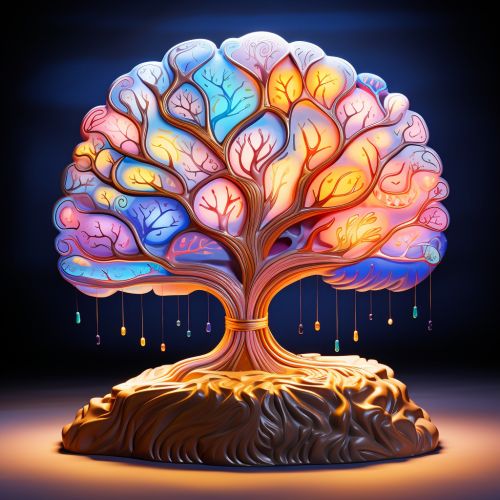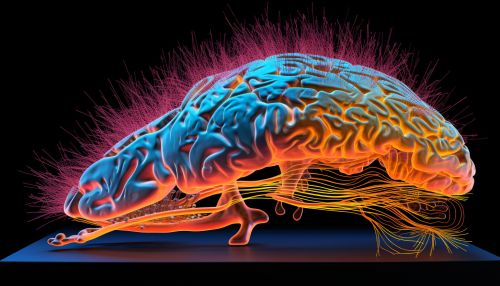Neuroscience of sleep
Introduction
The neuroscience of sleep involves the study of the neurobiological and physiological processes that regulate the sleep cycle. This field of research seeks to understand the mechanisms by which the brain controls the timing, duration, and structure of sleep and wakefulness. The study of sleep neuroscience has revealed intricate networks of neurons and neurotransmitters that interact to produce sleep and wake states.
Neurobiology of Sleep
The neurobiology of sleep is a complex field that involves the study of various brain structures, neurotransmitters, and hormones that regulate sleep and wakefulness. The two primary states of sleep, rapid eye movement (REM) sleep and non-rapid eye movement (NREM) sleep, are controlled by different neural circuits and neurotransmitter systems.


Brain Structures Involved in Sleep Regulation
Several brain structures play critical roles in the regulation of sleep and wakefulness. These include the hypothalamus, the thalamus, the brainstem, and the cerebral cortex.
Hypothalamus
The hypothalamus is a small region at the base of the brain that plays a crucial role in sleep regulation. It contains several groups of neurons that produce neurotransmitters involved in sleep and wakefulness. The suprachiasmatic nucleus (SCN) in the hypothalamus serves as the body's primary biological clock, regulating the circadian rhythm of sleep and wakefulness.
Thalamus
The thalamus is a large mass of gray matter located in the center of the brain. It acts as a relay station for sensory information, transmitting it to the cerebral cortex. During sleep, the thalamus becomes less active, reducing the amount of sensory information that reaches the cortex.
Brainstem
The brainstem, located at the base of the brain, contains several groups of neurons that produce neurotransmitters involved in sleep and wakefulness. The reticular formation, a network of neurons in the brainstem, plays a crucial role in maintaining wakefulness.
Cerebral Cortex
The cerebral cortex, the outer layer of the brain, is involved in many functions, including sensory processing, motor control, and higher cognitive functions. During sleep, the activity of the cerebral cortex changes dramatically, with different patterns of activity observed during REM and NREM sleep.
Neurotransmitters and Sleep
Several neurotransmitters play crucial roles in sleep regulation. These include gamma-aminobutyric acid (GABA), serotonin, norepinephrine, acetylcholine, and dopamine.
GABA
GABA is the primary inhibitory neurotransmitter in the brain. It plays a crucial role in promoting sleep by inhibiting the activity of wake-promoting neurons.
Serotonin
Serotonin is involved in the regulation of mood, appetite, and sleep. It plays a role in inhibiting REM sleep and promoting wakefulness.
Norepinephrine
Norepinephrine is involved in the regulation of attention, arousal, and sleep-wake cycles. It promotes wakefulness by increasing the activity of wake-promoting neurons.
Acetylcholine
Acetylcholine is involved in the regulation of REM sleep. It promotes REM sleep by increasing the activity of REM-promoting neurons.
Dopamine
Dopamine is involved in the regulation of motivation, reward, and sleep. It promotes wakefulness by increasing the activity of wake-promoting neurons.
Sleep Disorders and Neuroscience
Many sleep disorders are associated with dysfunctions in the neural mechanisms that regulate sleep and wakefulness. These include insomnia, sleep apnea, narcolepsy, and restless legs syndrome.
Insomnia
Insomnia, characterized by difficulty falling asleep or staying asleep, is often associated with hyperactivity of the wake-promoting neurons in the brain. Neurotransmitter imbalances, particularly low levels of GABA, may also contribute to insomnia.
Sleep Apnea
Sleep apnea, characterized by repeated episodes of stopped or shallow breathing during sleep, is often associated with dysfunction in the brainstem areas that control breathing. Neurotransmitter imbalances, particularly low levels of serotonin, may also contribute to sleep apnea.
Narcolepsy
Narcolepsy, characterized by excessive daytime sleepiness and sudden attacks of sleep, is often associated with a loss of neurons in the hypothalamus that produce the neurotransmitter orexin, which promotes wakefulness.
Restless Legs Syndrome
Restless legs syndrome, characterized by an irresistible urge to move the legs, is often associated with dysfunction in the brain areas that control movement. Neurotransmitter imbalances, particularly low levels of dopamine, may also contribute to restless legs syndrome.
Conclusion
The neuroscience of sleep is a rapidly evolving field that continues to uncover the complex neural mechanisms that regulate sleep and wakefulness. Understanding these mechanisms not only provides insight into the fundamental nature of sleep but also has important implications for the treatment of sleep disorders.
